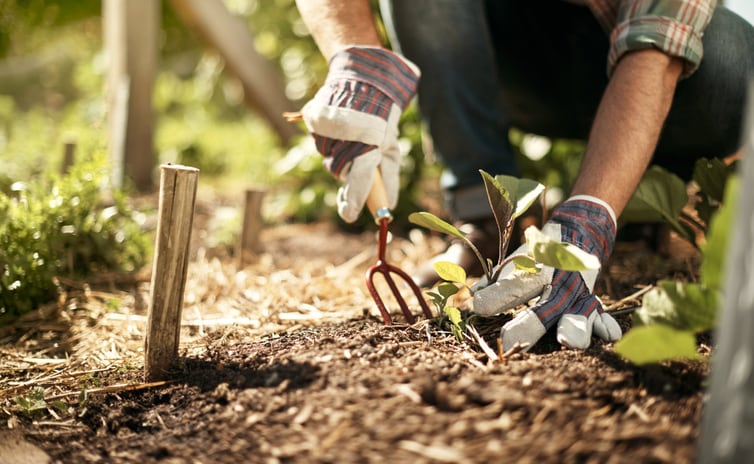Key points
- Nocardiosis is a disease caused by bacteria found in soil.
- It can affect the lungs, brain, and skin.
- Nocardiosis is most common in people with weakened immune systems.
- The disease is treated with commonly available antibiotics.
- The infection can prove fatal in as many as 4 out of 10 cases.
More Information

Overview
Nocardiosis is a disease caused by bacteria found in soil. It can affect the lungs, brain, and skin. While the disease can be treated with commonly available antibiotics, it can be fatal in 4 out of 10 cases.
In the United States, about 500-1,000 new cases of nocardiosis occur every year. About 6 in 10 people who get nocardiosis have weakened immune systems.
Signs and symptoms
The symptoms of nocardiosis can be different depending on which part of your body is affected.
Nocardiosis usually affects the lungs. If your lungs are infected, you can experience:
- Fever
- Weight loss
- Night sweats
- Cough
- Chest pain
- Pneumonia
If you get a lung infection from nocardia, the infection can spread to your brain. If your central nervous system (brain and spinal cord) is infected, you can experience:
- Headache
- Weakness
- Confusion
- Seizures
Nocardiosis and skin infections
You can get a skin infection when soil containing Nocardia bacteria gets into open wounds or cuts in your skin. Farming or gardening without gloves and protective clothing increases the risk of cuts, thorn pricks, or other minor injuries.
If your skin is infected, you can develop skin ulcers or shallow sores. You might also have nodules, which are growths beneath the surface of the skin. Sometimes, the nodules drain when the infection spreads to your lymph nodes.
People at risk
People who have had an organ transplant and people with very weak immune systems have a higher risk for nocardiosis
Several diseases and conditions can cause people's immune systems to be weak. These include:
- Diabetes
- Cancer
- HIV/AIDS
- Alcoholism
- Pulmonary alveolar proteinosis (when the lungs' air sacs get plugged)
- Connective tissue disorder that affects muscles and ligaments
- Having had a bone marrow or solid organ transplant
- Taking high doses of drugs called corticosteroids
Men have a greater risk of getting the infection than women. In fact, for every woman who gets nocardiosis, there are about 3 men who get the disease.
How it spreads
Nocardiosis is a disease caused by a type of bacteria called Nocardia that is found in the environment. It's typically in standing water, decaying plants, and soil.
Nocardia and other related bacteria are considered opportunistic germs. These are bacteria that infect people and animals when the conditions are right.
They can cause severe infections in people with weakened immune systems who have difficulty fighting off infections. People with cancer or those taking certain medications like steroids could have weakened immune systems.
Infection occurs when:
- Someone breathes in dust that contains the bacteria
- Soil or water carrying nocardia bacteria gets into the skin through a cut
- A hospitalized patient gets the bacteria in their surgery wound via contaminated medical equipment
Nocardiosis can show up in the body as a skin or lung infection. It can also occur as an infection that has spread throughout the body (disseminated infection).
In the United States, nocardiosis most often shows up as a lung infection. No matter the cause, nocardiosis needs to be treated. If not, it can spread to other parts of the body, including the spinal cord and the brain.
The brain is the most common site of disseminated infection.
Fact
Prevention
If you have a weakened immune system, you should take certain precautions when working in the soil:
- Wear shoes and gloves.
- Wear clothing covering your skin
- Bandage open wounds and cuts.
If you have had an organ transplant, you might be given antibiotics to prevent bacterial infections. Some studies have shown this might prevent nocardiosis.
Outbreaks of nocardiosis in hospitals are rare. A few outbreaks have been linked to other patients and healthcare workers. One outbreak occurred from the release of bacteria in the air during hospital construction work. Hospitals maintain strong infection control practices to avoid outbreaks of nocardiosis.
Diagnosis
Talk to your doctor if
Your healthcare provider can help you find out if you have nocardiosis by performing tests that look for the bacteria. Your healthcare provider may need to take samples from an infected part of your body. For example:
- Lungs
- Mucus from the lower airways
- Skin
- Brain tissue
Treatment
People with nocardiosis may need to take multiple antibiotics for several months. Sometimes, antibiotic treatment lasts up to a year or more. Longer treatments are meant to prevent symptoms from returning. In addition to treatment, abscesses or wound infections may need to be surgically drained.
Some types of Nocardia bacteria are resistant to certain antibiotics. So, laboratory testing is needed to find out which type (species) is causing the infection. Healthcare providers might run tests to find out which antibiotic treatment will stop your infection.
